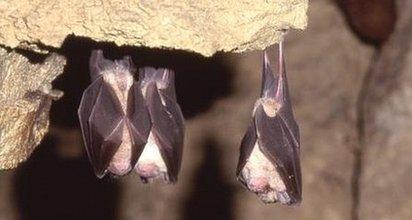Most UK bat species 'recovering or stable'
- Published

Bechstein's bat: Some of the woodland species are not so easy to count
The UK's bats are holding their own, according to the most recent national survey.
Of the 18 resident species, most are growing in number or are stable.
It is evidence that protective measures introduced in recent years are working, the Bat Conservation Trust, external says.
However, the group cautions that the status of all populations needs to be viewed in the context of major declines that occurred during the 20th Century.
"There has been so much conservation action in recent years, along with legislation, that we would have hoped to see some sort of positive response," said Phil Briggs, the trust's monitoring manager.
"It's thought that bats have not yet recovered to their historic levels but it's good to see some bats going in the right direction," he told BBC News.
The latest State of UK's Bats report, external was compiled with the help of more than 1,200 citizen scientists.

Anyone can take part in the monitoring programme
These volunteers have been out across the nation counting the animals using detectors that pick up their ultrasonic chatter.
The echolocation sounds not only announce the bats' presence but can also be used to distinguish the different species.
Those doing particularly well include the greater and lesser horseshoe bats; those apparently not doing quite so well include the brown long-eared bat and the serotine bat.

Nathusius' pipistrelle: Bats are seen as an indicator of the general health of ecosystems
But the figures carried some caveats, said Mr Briggs.
Natural year-on-year variability has to be accounted for, and for some species - such as the Leisler's bat and the Nathusius' pipistrelle - there is simply insufficient data on which to make a definitive statement.
It is the case, too, that some animals are harder to count because of their behaviour, and this may underplay their true status.
"Some of the woodland species, for example, have quiet calls so they're more difficult to pick up on bat detectors, and they can be hard to tell apart because their calls are quite similar," Mr Briggs explained.
"Sometimes the only way you can tell the difference is when experienced volunteers trap the bats and examine them."
The Bechstein’s and barbastelle bats fall into this category. One innovation for the future that may help is automated listening stations that will record sounds that can then be analysed in detail by computer.
Bat numbers in the 20th Century were greatly reduced because of human activity.
Deleterious impacts included roost and habitat loss, disruption of insect food supplies, increased urbanisation, and the general spread of artificial lighting.

The greater horseshoe bats appear to be adding to their population successfully
More recent developments such as wind turbines have also put pressure on populations.
The power units' installation had to be planned and managed with care, said Mr Briggs.
"It's thought bats may be drawn to turbines, to use them as features on the landscape to help them navigate.
"They don't necessarily get killed by collision. When they get close to the blades, just the change in air pressure can cause internal injuries. Wind turbines are obviously very important but they need to be sited away from important bat commuter routes."
Anyone wishing to get involved in National Bat Monitoring Programme Surveys can enrol online, external.